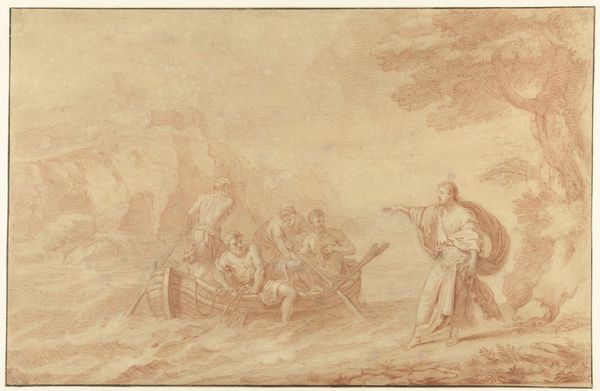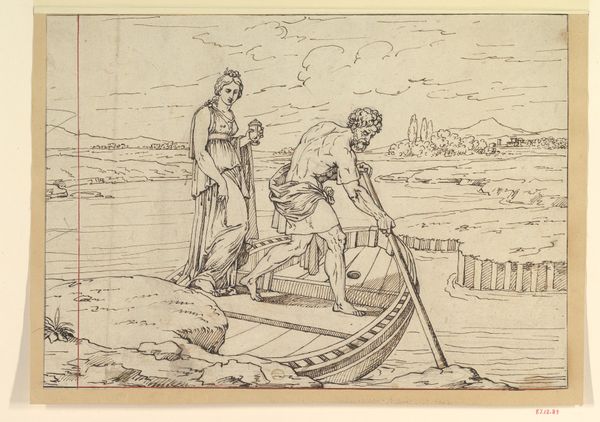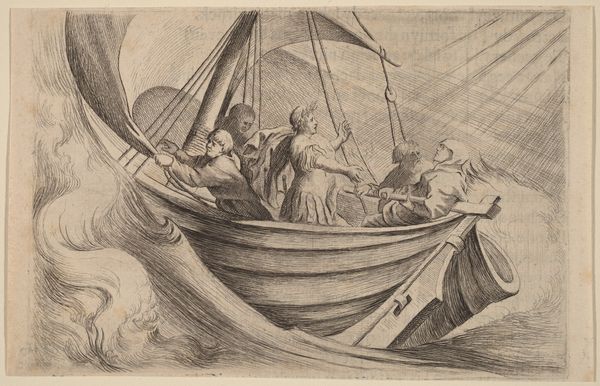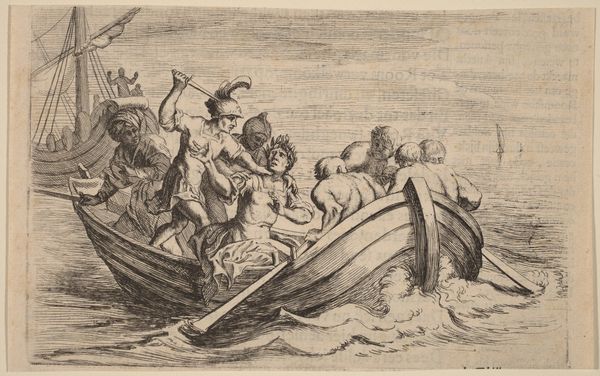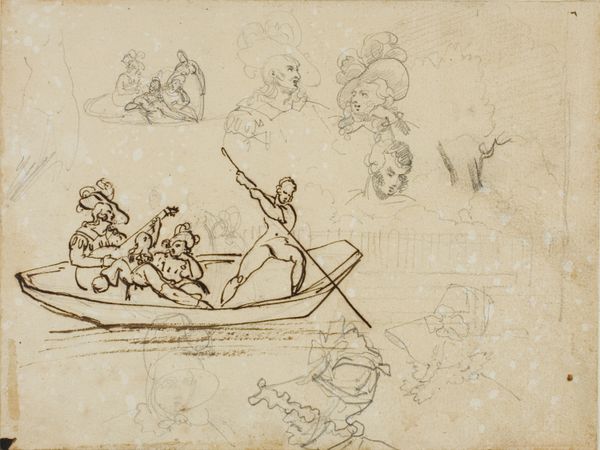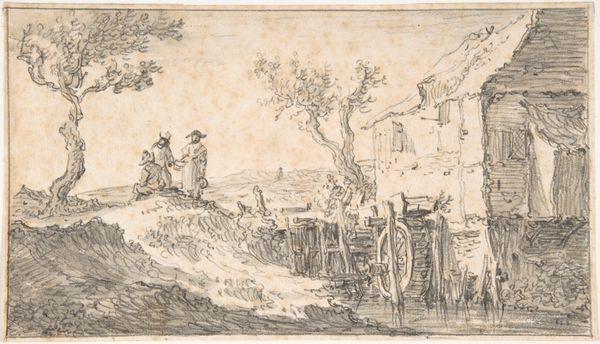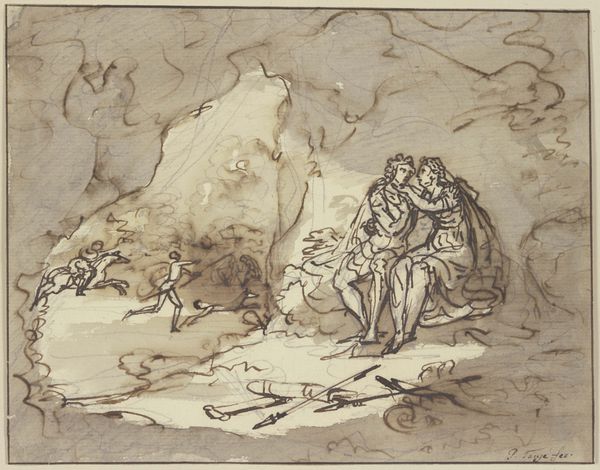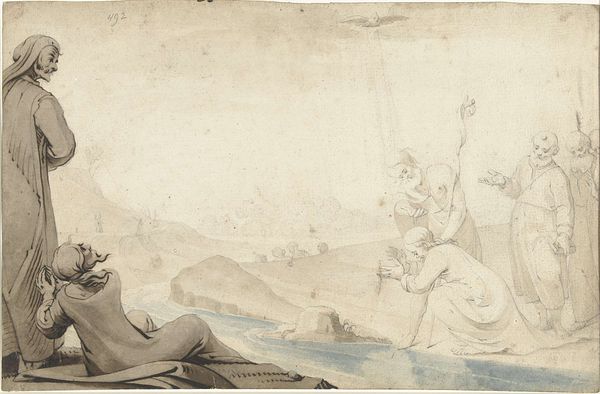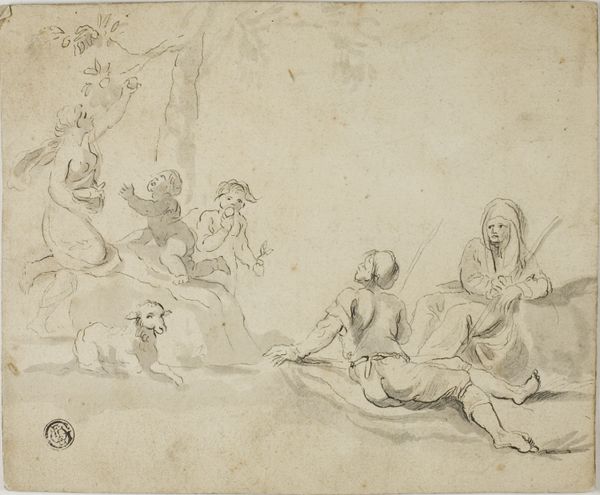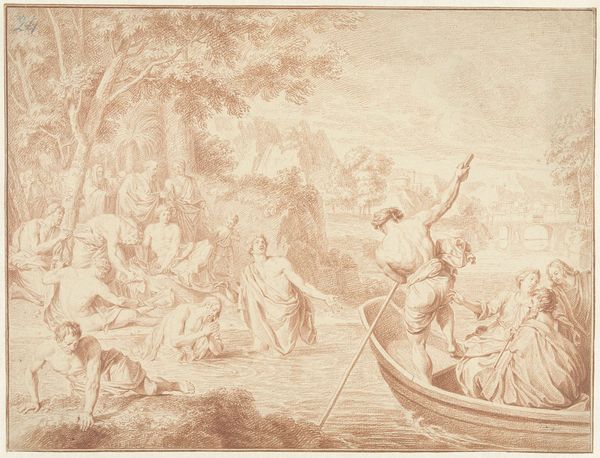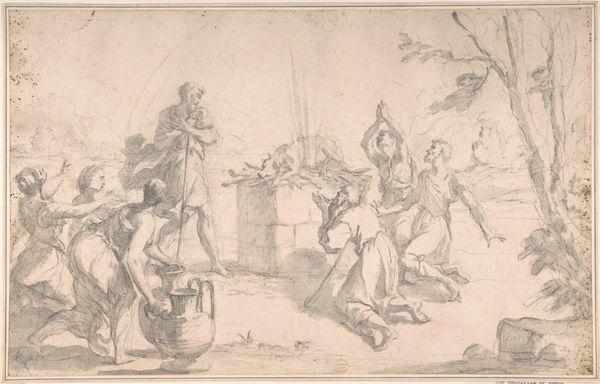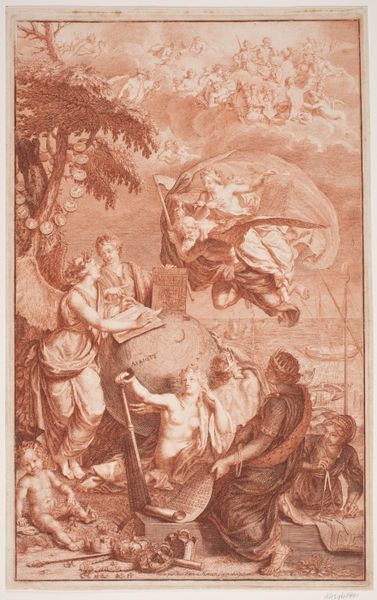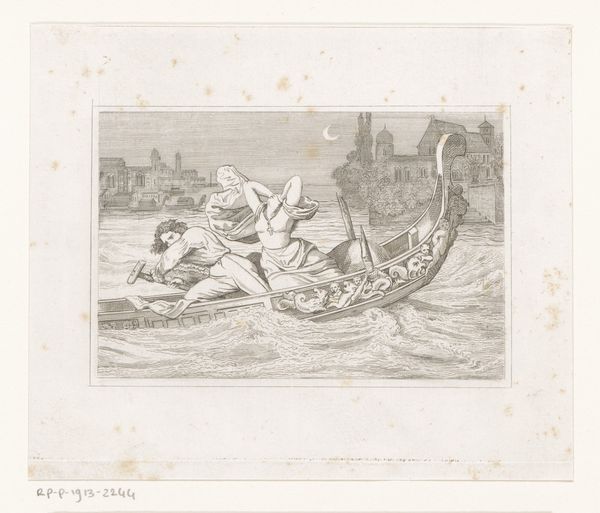
drawing, print, paper, ink, chalk, graphite
#
drawing
#
allegory
#
narrative-art
#
baroque
#
ink painting
# print
#
classical-realism
#
figuration
#
paper
#
ink
#
chalk
#
graphite
#
genre-painting
#
history-painting
Dimensions: 193 × 239 mm
Copyright: Public Domain
Editor: Here we have "Charon Ferrying Mars and Minerva," a 17th-century drawing by an anonymous artist, rendered in ink, chalk, and graphite on paper. It's an image that feels steeped in history and mythology, and the sepia tones give it a sense of age and solemnity. What draws your eye to this particular piece? Curator: Well, as a historian, I find this image fascinating for how it visualizes power dynamics. We see Mars, the god of war, and Minerva, the goddess of wisdom and strategy, being ferried by Charon, who traditionally carries souls to the underworld. The question becomes, what kind of cultural narrative is being woven here? Editor: A cultural narrative? Could you explain that a little more? Curator: Certainly. Consider the historical context of the 17th century. Allegorical representations like this were often commissioned by the powerful elite. In what ways were mythological figures being used to project particular social or political ideals, reflecting ideas about war and peace? Editor: So, you're saying the choice to depict these specific gods and Charon could have been making a commentary on the role of war and intellect in governance? Curator: Precisely! And it prompts us to consider how institutions like the Church or the State used and manipulated classical imagery to bolster their own authority. Editor: That's a very different angle than just seeing it as a pretty drawing. It makes me think about the artist’s role as a mouthpiece – or maybe a subtle critic? Curator: Exactly. That tension—the artist as both a participant in and commentator on the socio-political landscape—is central to understanding the artwork's cultural value and its long life as an image. Editor: This really changes my perspective. I always focused on the aesthetics, but understanding the historical function gives it so much more depth. Curator: That’s the power of history, isn’t it? It invites us to consider whose stories are being told, and how those stories shape our understanding of the world.
Comments
No comments
Be the first to comment and join the conversation on the ultimate creative platform.
